Aug 30, 2019 | APSA, Current Events, Law, National, Policy, Race, Social Policy
Post developed by Nicole Yadon, Kiela Crabtree, and Katherine Pearson
ICYMI (In Case You Missed It), the following work was presented at the 2019 Annual Meeting of the American Political Science Association (APSA). The presentation, titled “Breeding Contempt: Whites’ Reactions to Police Violence against Men & Dogs” was a part of the session “Race and Politics: New Theoretical and Methodical Insights v. Old Paradigms” on Thursday, August 29, 2019.
Of 987 individuals killed by police officers’ use of fatal force in 2018, 209 were black, and, of those, 200 were black men. The targeting and killing of unarmed black men has become a point of interest for news cycles and social movement organizations alike and is indicative of a fraught relationship between communities of color and police. With increasing press coverage over the past decade, academics have also begun to focus on the intertwining relationship between police use of force and race, complementing a long-standing literature which links blacks to perceptions of criminality, violence, and hostility. One area that is not well-developed, however, is how news coverage of police shootings influences attitudes towards police and policies related to policing for white Americans.
Building from research on race, media coverage, and policing, new research by Nicole Yadon and Kiela Crabtree examines reactions to police and policing by white people after they read about a police officer shooting a white man, a black man, or a dog. They find that news reports about police shootings change attitudes about police, but the strength of the reaction varies depending on who the victim is.
Specifically, Yadon and Crabtree’s study examines white individuals’ feelings towards police following exposure to news of a fatal police shooting. They designed a survey that presents participants with a fictional but realistic news report about a fatal police shooting. In one version the shooting victim is a black man, another reports that the victim is a white man, and in the third version the victim is a dog. Key information about the shooting remains the same across all three versions. A control story, unrelated to race or police shootings, was given to a control group for purposes of comparison with the three treatment groups. This experiment was conducted via Amazon’s Mechanical Turk (MTurk) platform, with 802 white participants. After reading one of the news reports, participants were asked a series of questions about their perceptions of the events in the article and about their attitudes towards police more broadly.
When asked whether they agree or disagree that police officers rarely abuse their power, the control group who had not read about a police shooting had a neutral response — about 0.49 on the 0 to 1 scale. Respondents who read about a white man or a dog being shot by police had a markedly different reaction. Participants who read an article about a white man shot by police had a 7 percentage point decrease in belief that police rarely abuse their power while those who read about a dog shot by a police officer had an 8 percentage point decrease. This is equivalent to survey respondents moving from feeling neutral about whether police abuse their power to a slight disagreement that abuse of power is rare after reading about either a White victim or dog victim.
Importantly, when white survey participants read about a black victim of a police shooting, it did not change their perception of abuse of power by police officers. Put differently, those who read about a black victim held views abuse police abuse of power that were indistinguishable from those who read the control story. The evidence suggests, then, that white respondents react more strongly to a police shooting if the victim is a dog than a black man.
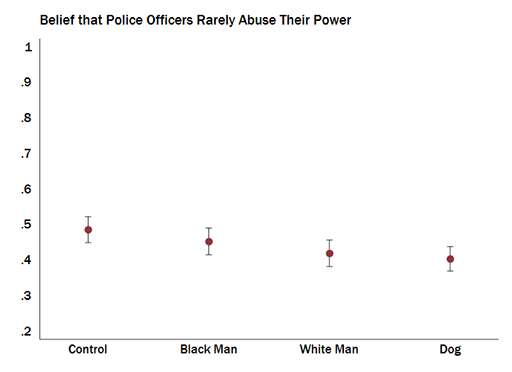
A separate set of questions focused on interest in varying forms of political participation following exposure to the news story. Do white people feel moved toward political participation in response to a story about a police shooting? First, the survey asked whether respondents would support a civilian review board to oversee the police department in their community. Those who read about a police officer shooting a black man or a dog were no more likely to support a civilian review board than the control group. However, those who read about the shooting of a white man were more than 7 percentage points likely to support civilian review in their community.

A second question asked about interest in signing a petition urging Congress to take action towards reducing excessive use of force by police. In contrast to the civilian review board question, levels of support for signing a petition were very low across all groups. In fact, white participants do not appear increasingly motivated to urge Congress to take action against excessive police force regardless of the victim’s identity.
Taken together, Yadon and Crabtree’s results suggest that exposure to a news story about a police shooting draws strong reactions from white people. Of concern, however, is that such reactions are largely limited to viewing either a white man or a dog victim. Indeed, across most of the items which measure attitudes towards police, there are no statistically significant differences when comparing the control condition with the black victim treatment. Such connections are increasingly important to study as cities move toward tightening oversight of police forces and many such initiatives are presented to citizens at the ballot box. Thus, the attitudes citizens hold about police are not only their own. The public’s opinion has potentially lasting effects for the future of policing in local communities.
Mar 28, 2018 | Current Events, Elections, Innovative Methodology, Law, National
post written by Solmaz Spence
“Gerrymandering”— when legislative maps are drawn to the advantage of one party over the other during redistricting—received its name in 1812, when Massachusetts Governor Elbridge Gerry signed off on a misshapen district that was said to resemble a salamander, which a newspaper dubbed a “gerrymander.”
But although the idea of gerrymandering has been around for a while, proving that a state’s legislature has deliberately skewed district lines to benefit one political party remains challenging.
The problem is that the mere presence of partisan bias in a district map tells us very little about the intentions of those drawing the districts. Factors such as racial segregation, housing and labor markets, and transportation infrastructure can lead to areas where one party’s supporters are more geographically clustered than those of the other party. When this happens, the party with a more concentrated support base achieves a smaller seat share because it racks up large numbers of “surplus” votes in the districts it wins, while falling just short of the winning threshold in many of the districts it loses.
Further, there are many benign reasons that legislatures may seek to redistrict voters—for example, to keep communities of interest together and facilitate the representation of minorities—that may have the unintended consequence of adding a partisan spin to the map.
The research of political scientists Jowei Chen and Jonathan Rodden is helping to differentiate cases of deliberate partisan gerrymandering from other redistricting efforts. Chen, Faculty Associate at the University of Michigan’s Center for Political Studies, and Rodden, Professor of Political Science at Stanford University, have devised a computer algorithm that ignores all partisan and racial considerations when drawing districts, and instead creates thousands of alternative district maps based on traditional districting goals, such as equalizing population, maximizing geographic compactness, and preserving county and municipal boundaries. These simulated maps are then compared against the district map that has been called into question to assess whether partisan goals motivated the legislature to deviate from traditional districting criteria.
We first wrote about Chen and Rodden’s work back in December 2016, detailing a 2015 paper in the Election Law Journal, which used the controversial 2012 Florida Congressional map to show how their approach can demonstrate and unconstitutional partisan gerrymander. Now, this work is back in the spotlight: Chen’s latest research has been cited in several cases of alleged gerrymandering that are currently working through the courts in Pennsylvania, North Carolina, Wisconsin and Maryland.
In January, Chen’s testimony as an expert witness was cited when the Pennsylvania Supreme Court threw out the state’s U.S. House of Representatives district map. In its opinion, the court said the Pennsylvania map unconstitutionally put partisan interests above other line-drawing criteria, such as eliminating municipal and county divisions.
The Pennsylvania districts in question were drawn by the Republican-controlled General Assembly in 2011. Immediately, the shape of the districts was an indicator that at least one traditional criterion of districting—compactness—had been overlooked.
Though few states define exactly what compactness means, it is generally taken to mean that all the voters within a district should live near one another, and that the boundaries of the district should be create a regular shape, rather than the sprawling polygon with donut holes or tentacles that characterized the Pennsylvania district map.
In particular, District 7—said to resemble Goofy kicking Donald Duck—had been called into question. “It is difficult to imagine how a district as roschachian and sprawling, which is contiguous in two locations only by virtue of a medical facility and a seafood/steakhouse, respectively, might plausibly be referred to as compact,” the court wrote.
Although there are more registered Democrats than Republicans in Pennsylvania, Democrats hold only five of the state’s 18 congressional districts. In the 2016 election, Democrats won each of their five House seats with an average of 75 percent of the vote while Republicans’ margin of victory was an average of 62 percent across their 13 districts. This is an indicator of “packing,” a gerrymandering practice that concentrates like-minded voters into as few districts as possible to deny them representation across districts.
Chen’s expert report assessed the district map and carried out simulations to generate alternative districting plans that strictly followed non-partisan, traditional districting criteria, and then measured the extent to which the current district map deviates from these simulated plans.
To measure the partisanship of the computer-simulated plans, Chen overlaid actual Pennsylvania election results from the past ten years onto the simulated districts, and calculated the number of districts that would have been won by Democrats and Republicans under each plan (see Figure 1).
The districting simulation process used precisely the same Census geographies and population data that the General Assembly used in creating congressional districts. In this way, the simulations were able to account for any geographical clustering of voters; if the population patterns of Pennsylvania voters naturally favor one party over the other, the simulated plans would capture that inherent bias.
Generally, the simulations created seven to ten Republican districts; not one of the 500 simulated districting plans created 13 Republican districts, as exists under the Republican-drawn district map. Thus, the map represented an extreme statistical outlier, a strong indication that the enacted plan was drawn with an overriding partisan intent to favor that political party. This led Chen to conclude “with overwhelmingly high statistical certainty that the enacted plan created a pro-Republican partisan outcome that would never have been possible under a districting process adhering to non-partisan traditional criteria.”
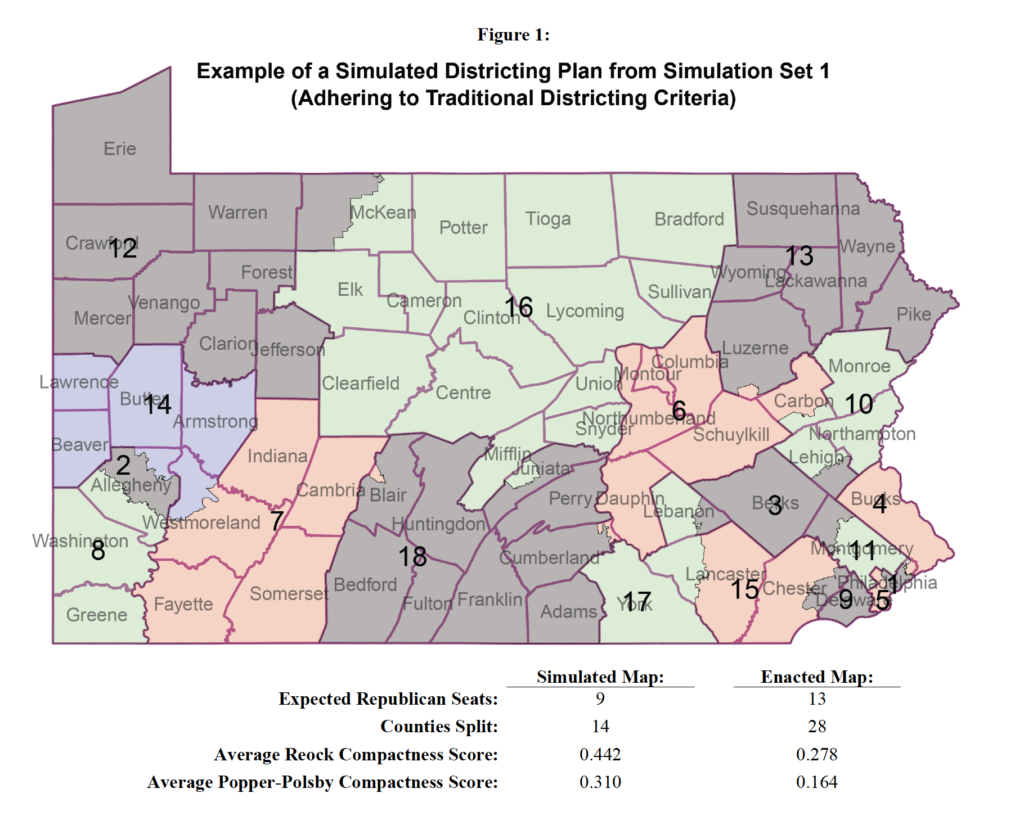
This table compares the simulated plans to the 2011 Pennsylvania district map with respect to these various districting criteria.
Following its ruling, on February 20 the Pennsylvania Supreme Court released a new congressional district map that has been described in a Washington Post analysis as “much more compact”. In response, the state’s Republican leadership announced plans to challenge the new map in court.
Dec 21, 2016 | Current Events, Elections, Foreign Affairs, Gender, Innovative Methodology, Law, Race
Post written by Catherine Allen-West.
Since it’s establishment in 2013, a total of 123 posts have appeared on the Center for Political Studies (CPS) Blog. As we approach the new year, we thought to take a look back at which of these 123 posts were most viewed across 2016.
01. Tracking the Themes of the 2016 Election by Lisa Singh, Stuart Soroka, Michael Traugott and Frank Newport (from the Election Dynamics blog)
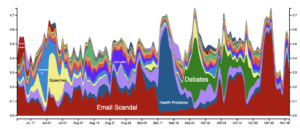 “The results highlight a central aspect of the 2016 campaign: information about Trump has varied in theme, almost weekly, over the campaign – from Russia, to taxes, to women’s issues, etc; information about Clinton has in contrast been focused almost entirely on a single theme, email.”
“The results highlight a central aspect of the 2016 campaign: information about Trump has varied in theme, almost weekly, over the campaign – from Russia, to taxes, to women’s issues, etc; information about Clinton has in contrast been focused almost entirely on a single theme, email.”
02. Another Reason Clinton Lost Michigan: Trump Was Listed First on the Ballot by Josh Pasek
 “If Rick Snyder weren’t the Governor of Michigan, Donald Trump would probably have 16 fewer electoral votes. I say this not because I think Governor Snyder did anything improper, but because Michigan law provides a small electoral benefit to the Governor’s party in all statewide elections; candidates from that party are listed first on the ballot.”
“If Rick Snyder weren’t the Governor of Michigan, Donald Trump would probably have 16 fewer electoral votes. I say this not because I think Governor Snyder did anything improper, but because Michigan law provides a small electoral benefit to the Governor’s party in all statewide elections; candidates from that party are listed first on the ballot.”
03. Motivated Reasoning in the Perceived Credibility of Public Opinion Polls by Catherine Allen-West and Ozan Kuru

“Our results showed that people frequently discredit polls that they disagree with. Moreover, in line with motivated reasoning theories, those who are more politically sophisticated actually discredit the polls more. That is, as political knowledge increases, the credibility drops substantially for those who disagree with the poll result.”
04. Why do Black Americans overwhelmingly vote Democrat? by Vincent Hutchings, Hakeem Jefferson, and Katie Brown, published in 2014.
“Democratic candidates typically receive 85-95% of the Black vote in the United States. Why the near unanimity among Black voters?”
05. Measuring Political Polarization by Katie Brown and Shanto Iyengar, published in 2014.
 “Both parties moving toward ideological poles has resulted in policy gridlock (see: government shutdown, debt ceiling negotiations). But does this polarization extend to the public in general?”
“Both parties moving toward ideological poles has resulted in policy gridlock (see: government shutdown, debt ceiling negotiations). But does this polarization extend to the public in general?”
06. What makes a political issue a moral issue? by Katie Brown and Timothy Ryan, published in 2014.
“There are political issues and then there are moral political issues. Often cited examples of the latter include abortion and same sex marriage. But what makes a political issue moral?”
07. Moral Conviction Stymies Political Compromise, by Katie Brown and Timothy Ryan, published in 2014.
Ryan’s overarching hypothesis boils non-compromise down to morals: a moral mindset orients citizens to oppose political compromises and punish compromising politicians. There are all kinds of issues for which some citizens seem resistant to compromises: tax reform, same-sex marriage, collective bargaining, etc. But who is resistant? Ryan shows that part of the answer has to do with who sees these issues through a moral lens.
08. Exploring the Effects of Skin Tone on Policy Preferences Among African Americans by Lauren Guggenheim and Vincent Hutchings, published in 2014.
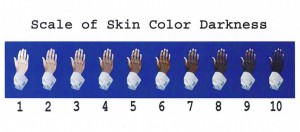 In the United States, African Americans with darker skin tones have worse health outcomes, lower income, and face higher levels of discrimination in the work place and criminal justice system than lighter skinned Blacks. Could darker and lighter skinned African Americans in turn have different policy preferences that reflect their socio economic status-based outcomes and experiences?
In the United States, African Americans with darker skin tones have worse health outcomes, lower income, and face higher levels of discrimination in the work place and criminal justice system than lighter skinned Blacks. Could darker and lighter skinned African Americans in turn have different policy preferences that reflect their socio economic status-based outcomes and experiences?
09. What We Know About Race and the Gender Gap in the 2016 U.S. Election by Catherine Allen-West
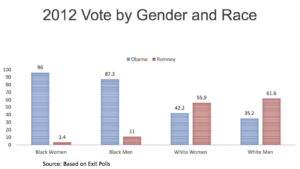 As of October, the latest national polls, predicted that the 2016 Election results will reflect the largest gender gap in vote choice in modern U.S. history. If these polls had proven true, the 2016 results would indicate a much larger gender gap than what was observed in 2012, where women overwhelmingly supported Barack Obama over Mitt Romney. University of Texas at Austin Professor Tasha Philpot argues that what really may be driving this gap to even greater depths, is race.
As of October, the latest national polls, predicted that the 2016 Election results will reflect the largest gender gap in vote choice in modern U.S. history. If these polls had proven true, the 2016 results would indicate a much larger gender gap than what was observed in 2012, where women overwhelmingly supported Barack Obama over Mitt Romney. University of Texas at Austin Professor Tasha Philpot argues that what really may be driving this gap to even greater depths, is race.
10. How do the American people feel about gun control? by Katie Brown and Darrell Donakowski, published in 2014.
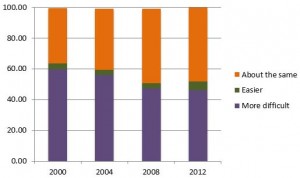 As we can see, the proportion of the public supporting tougher regulation is shrinking over the time period, while satisfaction with current regulations increased. Yet, support for tougher gun laws is the most popular choice in all included years. It is important to note that these data were collected before Aurora, Newtown, and the Navy Yard shootings. The 2016 ANES study will no doubt add more insight into this contentious, important issue.
As we can see, the proportion of the public supporting tougher regulation is shrinking over the time period, while satisfaction with current regulations increased. Yet, support for tougher gun laws is the most popular choice in all included years. It is important to note that these data were collected before Aurora, Newtown, and the Navy Yard shootings. The 2016 ANES study will no doubt add more insight into this contentious, important issue.
Oct 29, 2015 | International, Law, Profile
Post developed by Yioryos Nardis in coordination with Barbara Koremenos.
 Barbara Koremenos, Center for Political Studies faculty member and Professor of Political Science at the University of Michigan has recently begun a Visiting Research Fellowship at the Kroc Institute for International Peace Studies at the University of Notre Dame. The Kroc Institute is devoted to the study of the causes of violent conflict and strategies for sustainable peace. She was awarded the Fellowship to spend the 2015-2016 year studying the relationship between Islamic states and international law, and to examine how this affects Islamic states’ participation in international agreements and ultimately the peaceful resolution of differences.
Barbara Koremenos, Center for Political Studies faculty member and Professor of Political Science at the University of Michigan has recently begun a Visiting Research Fellowship at the Kroc Institute for International Peace Studies at the University of Notre Dame. The Kroc Institute is devoted to the study of the causes of violent conflict and strategies for sustainable peace. She was awarded the Fellowship to spend the 2015-2016 year studying the relationship between Islamic states and international law, and to examine how this affects Islamic states’ participation in international agreements and ultimately the peaceful resolution of differences.
Koremenos was inspired by looking at a random sample of international agreements in the issue areas of economics, environment, human rights, and security drawn from the United Nations Treaty Series (UNTS), which is by far the most popular place to register international agreements. She was struck by the fact that not a single agreement in her sample was composed solely of Islamic states. Within the sample, Egypt participated in the most agreements (25 agreements) while Oman had the lowest participation rate (seven agreements). With the exception of Malaysia, every other state in the sample participated in at least as many (usually more) human rights agreements than agreements in any of the other three issue areas. Within the sample, Lebanon participated more than any other Islamic state in environmental agreements at a quite low number of five.
Even more striking, participation in multilateral agreements seemed to far outweigh participation in bilateral agreements, even though bilateral cooperation is more prevalent worldwide when looking at the entire UNTS population. This is also true when looking at the sample featured in Professor Koremenos’ Continent of International Law (COIL) research program.
In the UNTS sample, over half of the Islamic states participated in no bilateral agreements; Egypt was the state that participated in the most bilateral agreements (six agreements) followed by Oman and Indonesia at two bilateral agreements each.
Koremenos will use her fellowship this year to examine whether:
- Islamic states simply participate in fewer international agreements than non-Islamic states
- With respect to participation in international agreements, there is variation within Islamic states that can be explained by whether Shari’a is officially adopted in a state’s constitution
- Islamic states participate in international agreements that are not registered with the UNTS;
- Islamic states participate in relatively more informal international agreements
Answers to these questions will give a sense of the amount of “failed cooperation” in those states – that is, cooperation that is precluded because certain institutional design tools, that might be key to solving the cooperation problems facing states, are disallowed by Shari’a Law – and, to begin to suggest larger relationships that might impact key factors in the world of peace and conflict like economic growth.
Nov 10, 2014 | Innovative Methodology, International, Law
Post developed by Katie Brown and Ugo Troiano.
In Italy, would be tax evaders hide money in houses. In response, the Italian government developed a “Ghost Buildings” program which used technology to identify and monitor buildings otherwise hidden from tax authorities. In total, the Italian government identified two million houses that were hidden for tax purposes.
How do voters respond to anti-tax evasion policy? Answering this question has been a challenge because tax evasion is illegal and is typically very hard to measure. However, the Ghost Buildings program offers a unique opportunity to investigate the issue. Center for Political Studies (CPS) Faculty Associate and Department of Economics Assistant Professor Ugo Troiano seized this chance in a working paper along with his co-author Lorenzo Casaburi who is a Postdoctoral Fellow at the Stanford Institute for Economic Policy Research (SIEPR).
The authors approached the research knowing that anti-tax evasion programs like the Ghost Building program hurt tax evaders while benefiting tax payers. Usually, one assumes evaders to be the minority and payers to be the majority. If this is the case, a program like Italy’s Ghost Buildings one should boost public opinion in support of incumbents as payers support the crackdown on evaders.
To test the effect in Italy, the authors mapped the identified Ghost Buildings to calculate a town-by-town concentration, as illustrated by the graph below.
Ghost Building Concentration
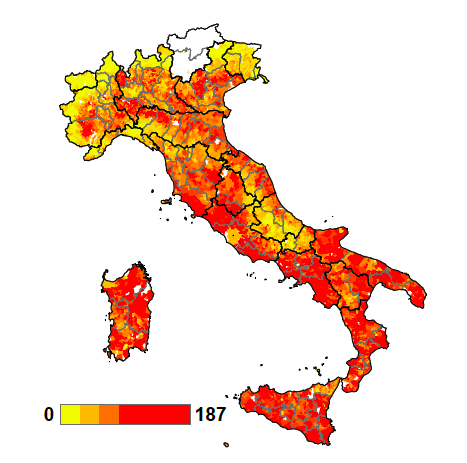
The authors also collected geographic and socio-economic data for the same towns. They found tax evasion to be more prevalent in cities, possibly because cities offer more opportunity to to buy houses from a larger stock. Tax evasion was also found to have an inverse relationship with social capital and income.
Troiano and Casaburi then looked at the impact of the Ghost Buildings program on vote choice. Specifically, they were interested in change in support for incumbent politicians. The graph below displays the results:
Difference in Reelection Rates Pre- to Post- Ghost Buildings Program

The positive trend-line shows that the higher the proportion of Ghost Buildings in a given town, the more that vote support for the incumbent increases. The authors therefore concluded that, “Local incumbents are shown to obtain positive political returns, namely, an increase in their reelection likelihood, from the Ghost Building program.”
The authors found that fighting tax evasion allowed politicians to increase public good provision, thereby creating material benefits to society. Second, support for the incumbent who fights tax evasion was found to be stronger in regions with attitudes more hostile to evaders. The authors also looked at responses to the World Values Survey question “Do you think tax evasion is justifiable?” and what they found suggests that tax enforcement and attitudes toward evasion have a complementary relationship.
Aug 30, 2014 | Current Events, Foreign Affairs, Innovative Methodology, International, Law
Post developed by Katie Brown and Muzammil M. Hussain.
ICYMI (In Case You Missed It), the following work was presented at the 2014 Annual Meeting of the American Political Science Association (APSA). The presentation, titled “Post-Arab Spring Formations of the Internet Freedom Regime,” was a part of the Political Communication panel “From the Middle East to the Million Man March: The Continuing Digital Revolution” on Saturday August 30th, 2014.

Photo credit: ThinkStock
In early 2011 through 2012, unexpected uprisings cascaded throughout the Arab World. News of this Arab Spring swept across the globe, which inspired several other cascades of political change. Communication systems, especially social media networks, offered an immediate and intimate glimpse into these movements, their successes and failures. So how have state powers and political activists responded to the political capacities of this shared and global digital infrastructure?
Communication Studies Assistant Professor and Center for Political Studies (CPS) Faculty Associate Muzammil M. Hussain studies the political economy of Internet freedom activism. In particular, he is interested in the fate of digital infrastructure in “born digital” states, or states which had successful regime changes that were enabled by digital media. The Arab Spring presents a fascinating and recent moment to consider these “born digital” states. Hussain asks what role governments – both the challenged authoritarian states and the emerging democracies – are playing in shaping communication networks. To address this, he focuses on the transnational activities of political activists promoting Internet freedom.
Hussain conducted fieldwork in the Middle East, North Africa, Western Europe, and North America between 2012-2013, after the Arab Spring protests subsided and a new kind of policy activism took root. Through this international network ethnography of policy makers, communications corporations, and political activists involved in the Arab Spring, Hussain collected a massive array of data. The data includes both interviews and participant-observation, with corroborative evidence of 5,000 individuals and their 84,000 social ties, as well as over 2,000 emails generated through their lobbying and activism work.
This meta-database encompasses the three main stakeholders in Internet freedom promotion: state powers, technology providers, and civil society actors. Hussain argues that Western democracies have been important and successful in launching several major initiatives for securing internet freedom and supporting digital activists currently working within repressive political systems. But these efforts to establish an Internet freedom policy regime are currently gridlocked in competing “communities of practice.”
On the one hand, the community of state-based stakeholders have come to narrowly regard digital media as a critical infrastructure, overvalued its significance as an economic interest and undervalued its significance to democratic activists. On the other hand, since the Arab Spring, the community of tech-savvy political activists has moved rapidly into many new communications policy arenas. Finally, revelations of warrantless surveillance by several advanced democracies have also threatened the viability of this Internet freedom regime. So what are democratic activists and Internet freedom promoters left to do? Stay tuned for Hussain’s next book project: Securing Technologies of Freedom: Internet Freedom Promotion after the Arab Spring.















